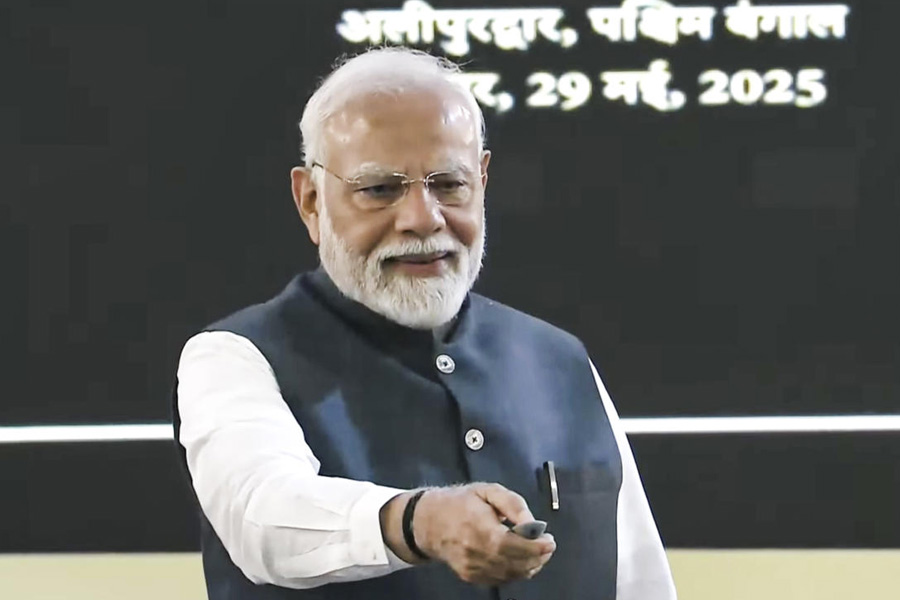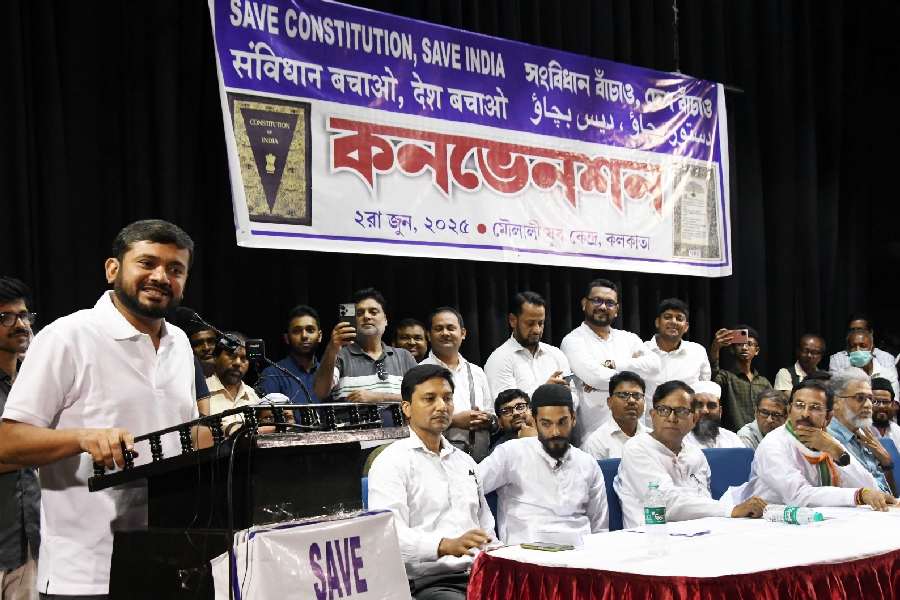

The stretch around central Calcutta's Mullickbazar crossing is brimming with the spirit of Eid. Roadside vendors are selling colourful glass and lacquer bangles, assorted fruits, mounds of dry fruits and bags filled with sewai or vermicelli.
There is a faint aroma of ghee that clings to the air. Bundles upon bundles of uncooked sewai lie on tabletops of makeshift stalls. Off-white, paper white, yellow, light brown. Men and women carrying huge shopping bags haggle with the vendors for their dose of this season's sweetness. Indeed, in the grand Eid spread of sheermal paratha, galauti kababs, biryani, mutton chaanp, sewai is the lone sweet note.
The scene at Zakaria Street is no different from Mullickbazar that evening. There is still a week to go before Eid. Shop owner Mohamad Eiyaz is taking an iftar break. His son, Shahnawaz, a college student, is filling in for his father. The shop that sells stationery all year also sells sewai during this time.
Shahnawaz tells us that they source it from a factory in Metiabruz on the outskirts of the city. And not just them, the paanwala, the man frying samosas, another manning a bag shop, all jump onto the sewai bandwagon at this time.
Qudimi Karkhana Sewai is different in that it sells sewai throughout the year. "What do you want - bhuna, mota, Banarasi, lachcha," asks Syed Feroze, who works at the 200-year-old shop, in between measuring a heap of lachcha for a customer. The lachcha is very fine of texture, looks like a heap of hay. It is basically made of rice or refined flour or semolina kneaded with ghee.
"The mota sewai comes from Lucknow, the Banarasi one from Benaras and the lachcha is made right here in the city," says Feroze, as he stashes the payment into a tin tiffin box. The finest and the most expensive of the lot is the Banarasi sewai. "What Basmati is to rice, Banarasi is to sewai," explains Shahanshah Mirza, a food connoisseur. He adds, "An Eid without sewai is considered incomplete."
Athar Ali, the 25-year-old owner of a garment shop in Chitpur, says that most people start to stack up sewai before the beginning of Ramzan, and consume it intermittently that whole month. Mirza says, "Chand raat marks the end of Ramzan and a lot of people buy sewai especially then because the next day is Eid."
The menu at most Mughlai eateries comprises firni and shaahi tukda and not sewai; it is the preserve of home kitchens and makes an appearance only on special occasions.
There is no one way of preparing sewai, we are given to understand. The lachcha is usually doused in a bowl of milk and had with a sprinkling of sugar. "A lot of people have it thus during sehri. It is filling and keeps one going all through the day," says Athar Ali.
We learn from homemaker Shagufta Bano, a resident of Howrah, that every family has its own version of the sewai, most of them going back several generations. "You could boil it in milk, cook it in chashni or sugar syrup, or deep fry it in ghee..." she rattles away.
Shagufta adds a generous pinch of jafran (saffron) to her version. First, she adds sugar in desi ghee, then water and, thereafter, some jafran for an orange tinge. Then she adds the raw sewai to this mix, throws in kaju, kishmish, pista, badaam and khoa. And a drop or two of meetha attar.
What Shagufta prepares is called the qimami sewai. There is also the sheer khurma, a sweet pudding made of milk, sewai, dried dates and sugar. Be it meethi sewai, sheer khurma or rumali sewai, the slight variations are most likely in the DNA of the dish - place of origin and consequent availability of ingredients.
Manzilat Fatima, a preserver of royal Awadhi family cuisine and a food curator, tells us about a sewai dish called muzaffar. "It is an age-old preparation, not so common in every home. One needs considerable expertise to achieve the balance of moisture in the sewai and at the same time maintain the individual strands of vermicelli," says Fatima.
Vermicelli does not have much of a flavour of its own, and so it readily absorbs the flavours of the ingredients it is cooked with. That is why it can be added to dishes sweet and savoury alike.
Chef Deepak Raj Srivastava of Pukhtaan, a restaurant in Patna specialising in Awadhi cuisine, tells The Telegraph over phone that sewai is also used to make savoury items, cutlets and potato rolls. In these cases, the vermicelli acts as a coating, lending a certain texture to the dish.
A dessert usually comes at the end of a meal. But in a manner, the sewai is an exception. Something sweet is partaken of before namaaz on Eid. Says Athar, "Having something sweet before the Eid prayers is sunnat, which means respecting the Prophet. Some households have dry dates and milk without sugar and some prefer sewai." It is also among the first few dishes offered to guests on Eid day, we are told - to sweeten relations.










